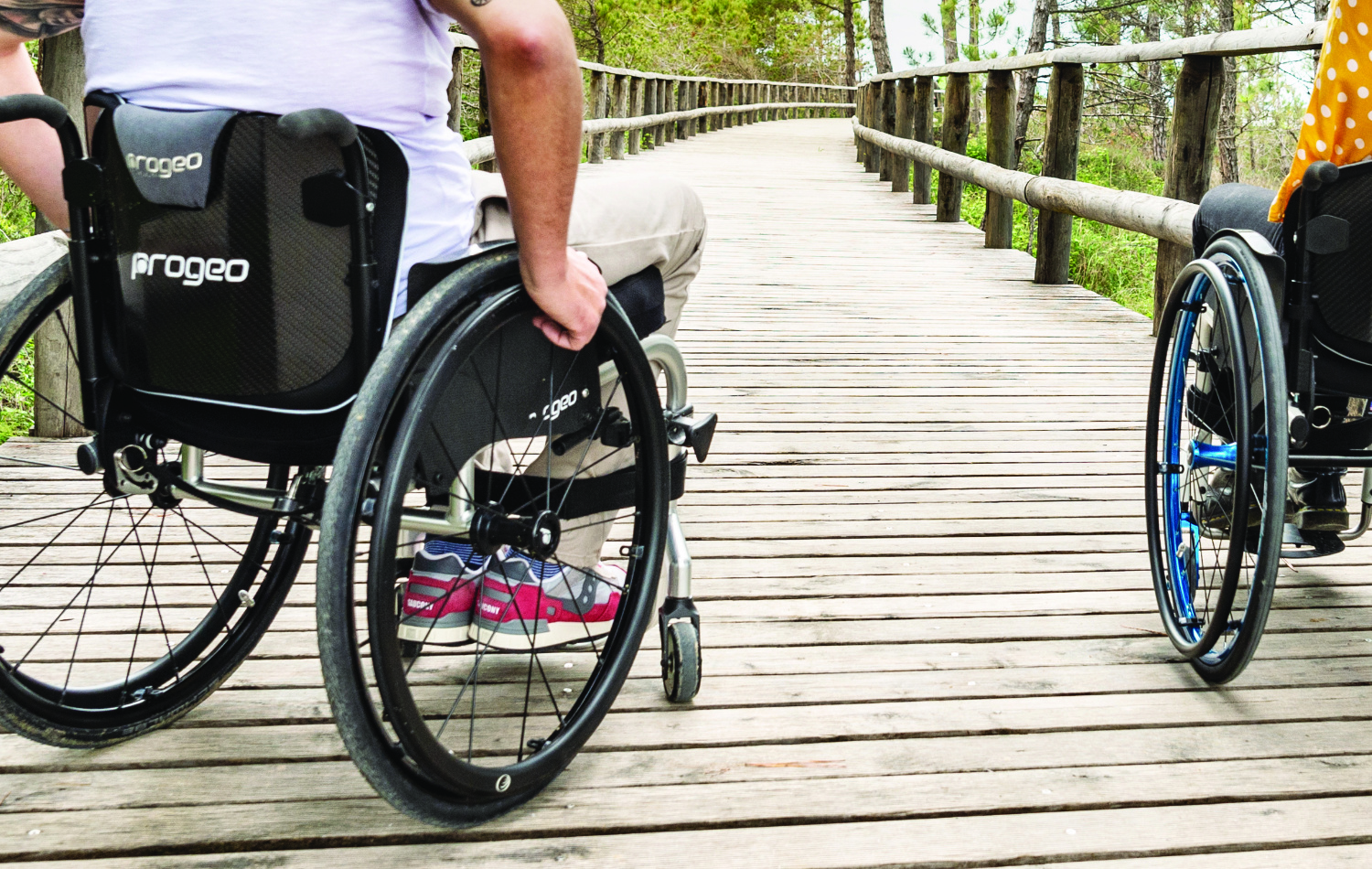
Choosing the right wheel size and tire type for a manual wheelchair is important for making sure you get the most comfort, performance, and functionality. The perfect combo can boost your mobility, ease physical strain, and make your wheelchair experience much better overall. Here are some things to consider to help you pick the best options.
Wheel size
The most common rear wheel size for manual wheelchairs is 24 inches. This size offers a good balance between manoeuvrability and ease of propulsion. It allows for efficient self-propulsion while maintaining stability, and generally allows to us to get the rear seat to floor height where the user would like it to be.
Smaller rear wheels (18, 20 or 22 inches) can make the wheelchair more compact and easier to manoeuvre in tight spaces. These sizes are most commonly used for paediatric wheelchairs, where the wheel needs to be smaller to be accessible to the user pushing the wheelchair, and also to ensure that the seat to floor height of the wheelchair can be lower to accommodate the smaller user’s size.
Larger rear wheels (25-26 inches) can provide a smoother ride over rough terrain and can make it easier to roll over obstacles. However, they can make the wheelchair bulkier and harder to transport. Larger wheels typically raise the rear seat to floor height, which can be beneficial for users who prefer a higher seating position or are taller in height. Because of this, 25” and 26” rear wheels are often used with taller people as they can make it more challenging to transfer in and out of the wheelchair if you’re not on the taller side.
Tyre choice
Tyres can broadly be categorised as pneumatic (pump-up) or solid.
Pneumatic tyres, also known as air-filled or pump up tyres, offer several significant benefits for manual wheelchair users. Pneumatic tyres provide excellent shock absorption, significantly enhancing the comfort of the ride. As the air in the tyres acts as a cushion, it absorbs shocks and vibrations from rough or uneven surfaces. This reduces the impact felt by the user, leading to a smoother and more comfortable ride. Pneumatic tyres can also help to reduce fatigue, by minimising vibrations and bumps, to reduce strain on the user's body, which is particularly beneficial for those who spend long periods in their wheelchair.
Pneumatic tyres can also roll more easily roll over small obstacles such as pebbles, cracks, and uneven surfaces, as the tyre’s ability to compress and conform to the shape of obstacles allows pneumatic tyres to handle bumps and rough terrain more smoothly. Pneumatic tyres are often lighter than foam-filled or solid tyres, and when properly inflated, high pressure pneumatic tyres can reduce rolling resistance making it easier to propel the wheelchair.
While pneumatic tyres offer numerous benefits, they also come with certain considerations. Pneumatic tyres require regular maintenance, including checking and maintaining proper air pressure to ensure optimal performance and to prevent flat tyres. And of course, with pneumatic tyres comes the risk of punctures, which can be inconvenient and may require the user to carry repair kits or replacement inner tubes. One of the most popular tyre choice is the Schwalbe Marathon Plus, a high pressure pneumatic tyre which provides the smooth ride and shock absorption of air-filled tyres, but has a thick protective layer along the tread to help minimise the risk of punctures. Because it offers a little of the benefits from both pneumatic and solid tyres, most people find it an excellent choice for their everyday wheelchair.
Solid tyres on a manual wheelchair offer significant benefits, particularly in terms of maintenance and reliability. Unlike pneumatic tyres, solid tyres are puncture-proof and do not require regular air pressure checks, making them a low-maintenance option that provides peace of mind for users. This durability ensures consistent performance without the worry of flats, which can be especially advantageous for users who do not have easy access to repair services or prefer not to deal with the inconvenience of tyre maintenance. Solid tyres also tend to be more durable over the long term, as they are made from robust materials designed to withstand wear and tear. While they offer less shock absorption compared to pneumatic tyres, they provide a firm and stable ride, which can be beneficial on smooth, flat surfaces commonly found indoors. Solid tyres can be heavier than some other options, but their reliability and maintenance-free nature make them a good choice for users seeking a hassle-free and durable tyre solution for their manual wheelchair.
Many tyres now try to combine the benefits of pneumatic tyres with solid tyres. A foam-filled wheelchair tyre is a type of tyre designed to offer a compromise between the comfort of pneumatic (air-filled) tyres and the durability of solid tyres. It is constructed by filling the inner cavity of a traditional tyre with a solid foam material, rather than air. Foam-filled tyres offer better shock absorption than solid tyres, providing a smoother ride closer to that of pneumatic tyres without the risk of punctures. Like solid tyres, foam-filled tyres do not require air and are puncture-proof, eliminating the need for regular maintenance. Foam filled tyres usually have a slightly higher rolling resistance compared to pneumatic tyres, which could require more effort to propel the wheelchair, and like solid tyres are heavier than pneumatic tyres.
The size of the rear wheels and the type of tires you choose play a big role in how well a manual wheelchair performs and feels. It’s all about finding the right balance to get the best comfort and functionality. Our GTK AT Consultants are here to help figure out these details so your wheelchair fits your needs perfectly. Reach out to us today, and let’s work together to create a manual wheelchair that's just right for you!



